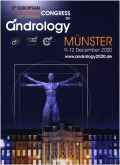- 钛学术文献服务平台 \
- 学术期刊 \
- 医药卫生期刊 \
- 外科学期刊 \
- 亚洲男性学杂志(英文版)期刊 \
null
Male patients with terminal renal failure exhibit low serum levels of antimüllerian hormone
基本信息来源于合作网站,原文需代理用户跳转至来源网站获取
摘要:
Male reproductive function is impaired during end?stage renal disease (ESRD). Disturbance of the hypothalamic?pituitary?gonadal axis, and therefore the regulation of sex hormones, is one of the major causes. Our focus was to include antimüllerian hormone (AMH) and inhibin B concentrations. Twenty male patients on hemodialysis, median age 40 (26–48) years, were analyzed for follicle?stimulating hormone (FSH), luteinizing hormone (LH), prolactin, sex hormone?binding globulin (SHBG), testosterone, estradiol, AMH and inhibin B levels. We used 144 proven fertile men, median age 32 (19–44) years as a control group and analyzed differences using multiple linear regression. Males with ESRD demonstrated higher mean values for prolactin, 742 versus normal 210 mIE l?1 (95% confidence interval (CI): 60.3, 729), LH, 8.87 versus normal 4.5 IE l?1 (95% CI: 2.75, 6.14), and estradiol 89.7 versus normal 79.0 pmol l?1 (95% CI: ?1.31, ?0.15). Mean value for AMH was lower, 19.5 versus normal 47.3 pmol l?1 (95% CI: ?37.6,?11.6). There were no differences found for FSH, SHBG, inhibin B and testosterone. The most important difference was found for AMH, a marker of Sertoli cell function in the testes, which decreased by close to 60% when compared with controls. Combined with an increase in LH, these findings may indicate a dysfunction of Sertoli cells and an effect on Leydig cells contributing to a potential mechanism of reproductive dysfunction in men with ESRD.

推荐文章
期刊_丙丁烷TDLAS测量系统的吸收峰自动检测
带间级联激光器
调谐半导体激光吸收光谱
雾剂检漏 中红外吸收峰 洛伦兹光谱线型
不同盐度、温度及光照对漂浮浒苔生理生态的影响
浒苔
盐度
温度
光照
生理生态
期刊_联合空间信息的改进低秩稀疏矩阵分解的高光谱异常目标检测
高光谱图像
异常目标检测 低秩稀疏矩阵分解 稀疏矩阵 残差矩阵
内容分析
关键词云
关键词热度
相关文献总数
(/次)
(/年)
文献信息
| 篇名 | Male patients with terminal renal failure exhibit low serum levels of antimüllerian hormone | ||
| 来源期刊 | 亚洲男性学杂志(英文版) | 学科 | |
| 关键词 | |||
| 年,卷(期) | 2015,(1) | 所属期刊栏目 | |
| 研究方向 | 页码范围 | 149-153 | |
| 页数 | 5页 | 分类号 | |
| 字数 | 语种 | 英文 | |
| DOI | 10.4103/1008-682X.135124 | ||
五维指标
引文网络
引文网络
二级参考文献 (6)
共引文献 (8)
参考文献 (24)
节点文献
引证文献 (0)
同被引文献 (0)
二级引证文献 (0)
1976(2)
- 参考文献(2)
- 二级参考文献(0)
1977(1)
- 参考文献(1)
- 二级参考文献(0)
1978(2)
- 参考文献(1)
- 二级参考文献(1)
1981(1)
- 参考文献(1)
- 二级参考文献(0)
1982(1)
- 参考文献(1)
- 二级参考文献(0)
1984(2)
- 参考文献(2)
- 二级参考文献(0)
1985(1)
- 参考文献(1)
- 二级参考文献(0)
1987(1)
- 参考文献(0)
- 二级参考文献(1)
1991(1)
- 参考文献(0)
- 二级参考文献(1)
1993(3)
- 参考文献(2)
- 二级参考文献(1)
1996(2)
- 参考文献(1)
- 二级参考文献(1)
1997(1)
- 参考文献(1)
- 二级参考文献(0)
1998(2)
- 参考文献(2)
- 二级参考文献(0)
1999(1)
- 参考文献(0)
- 二级参考文献(1)
2003(2)
- 参考文献(2)
- 二级参考文献(0)
2004(1)
- 参考文献(1)
- 二级参考文献(0)
2005(1)
- 参考文献(1)
- 二级参考文献(0)
2008(1)
- 参考文献(1)
- 二级参考文献(0)
2010(1)
- 参考文献(1)
- 二级参考文献(0)
2011(2)
- 参考文献(2)
- 二级参考文献(0)
2012(1)
- 参考文献(1)
- 二级参考文献(0)
2015(0)
- 参考文献(0)
- 二级参考文献(0)
- 引证文献(0)
- 二级引证文献(0)
引文网络交叉学科
相关学者/机构
期刊影响力
亚洲男性学杂志(英文版)
主办单位:
中国科学院上海药物研究所
出版周期:
双月刊
ISSN:
1008-682X
CN:
31-1795/R
开本:
大16开
出版地:
上海市太原路294号16号楼302室
邮发代号:
4-648
创刊时间:
1999
语种:
eng
出版文献量(篇)
2771
总下载数(次)
1
期刊文献
相关文献
推荐文献
- 期刊分类
- 期刊(年)
- 期刊(期)
- 期刊推荐
亚洲男性学杂志(英文版)2022
亚洲男性学杂志(英文版)2021
亚洲男性学杂志(英文版)2020
亚洲男性学杂志(英文版)2019
亚洲男性学杂志(英文版)2018
亚洲男性学杂志(英文版)2017
亚洲男性学杂志(英文版)2016
亚洲男性学杂志(英文版)2015
亚洲男性学杂志(英文版)2014
亚洲男性学杂志(英文版)2013
亚洲男性学杂志(英文版)2012
亚洲男性学杂志(英文版)2011
亚洲男性学杂志(英文版)2010
亚洲男性学杂志(英文版)2009
亚洲男性学杂志(英文版)2008
亚洲男性学杂志(英文版)2007
亚洲男性学杂志(英文版)2006
亚洲男性学杂志(英文版)2005
亚洲男性学杂志(英文版)2004
亚洲男性学杂志(英文版)2003
亚洲男性学杂志(英文版)2002
亚洲男性学杂志(英文版)2001
亚洲男性学杂志(英文版)2015年第6期
亚洲男性学杂志(英文版)2015年第5期
亚洲男性学杂志(英文版)2015年第4期
亚洲男性学杂志(英文版)2015年第3期
亚洲男性学杂志(英文版)2015年第2期
亚洲男性学杂志(英文版)2015年第1期

 免费查重
免费查重










